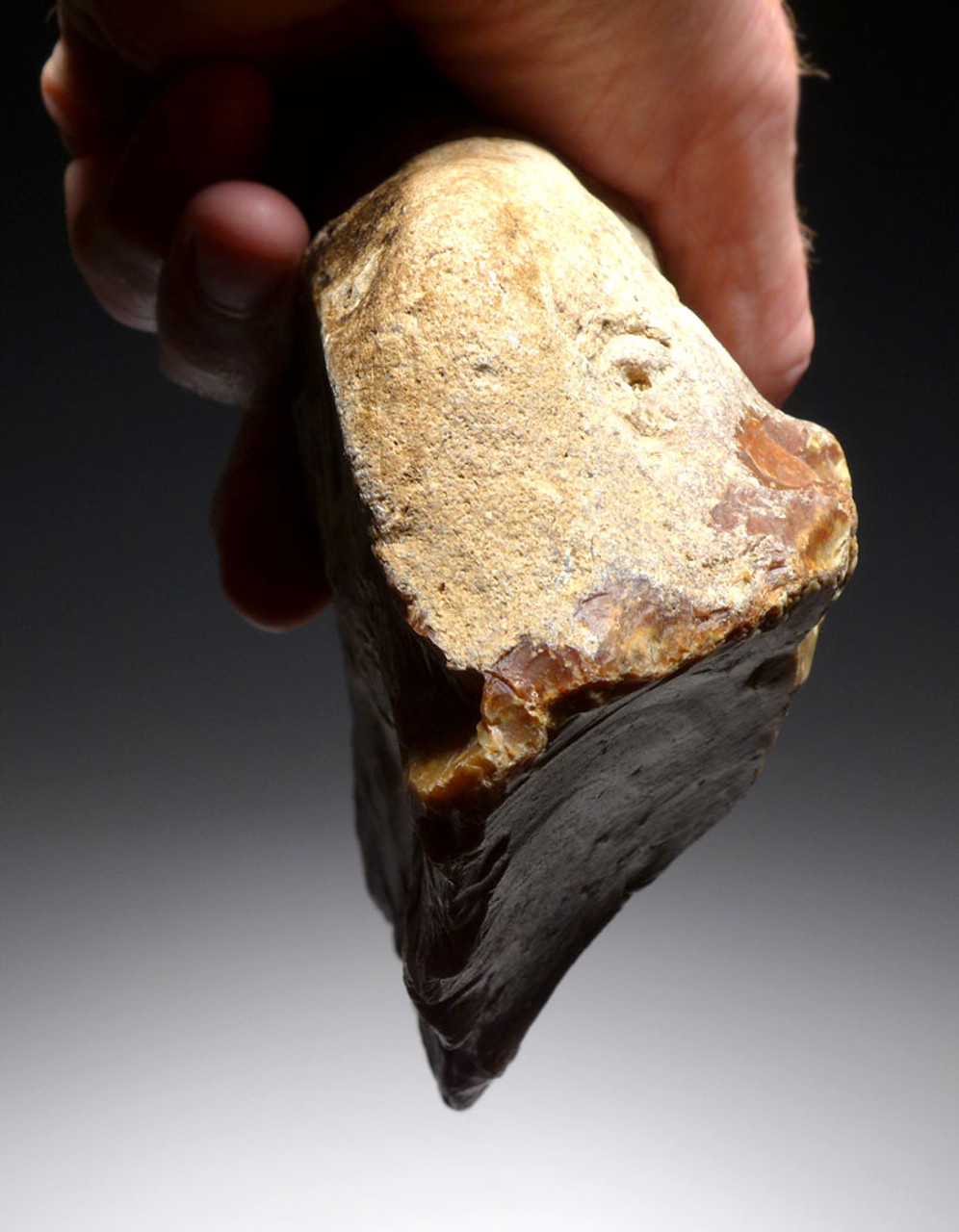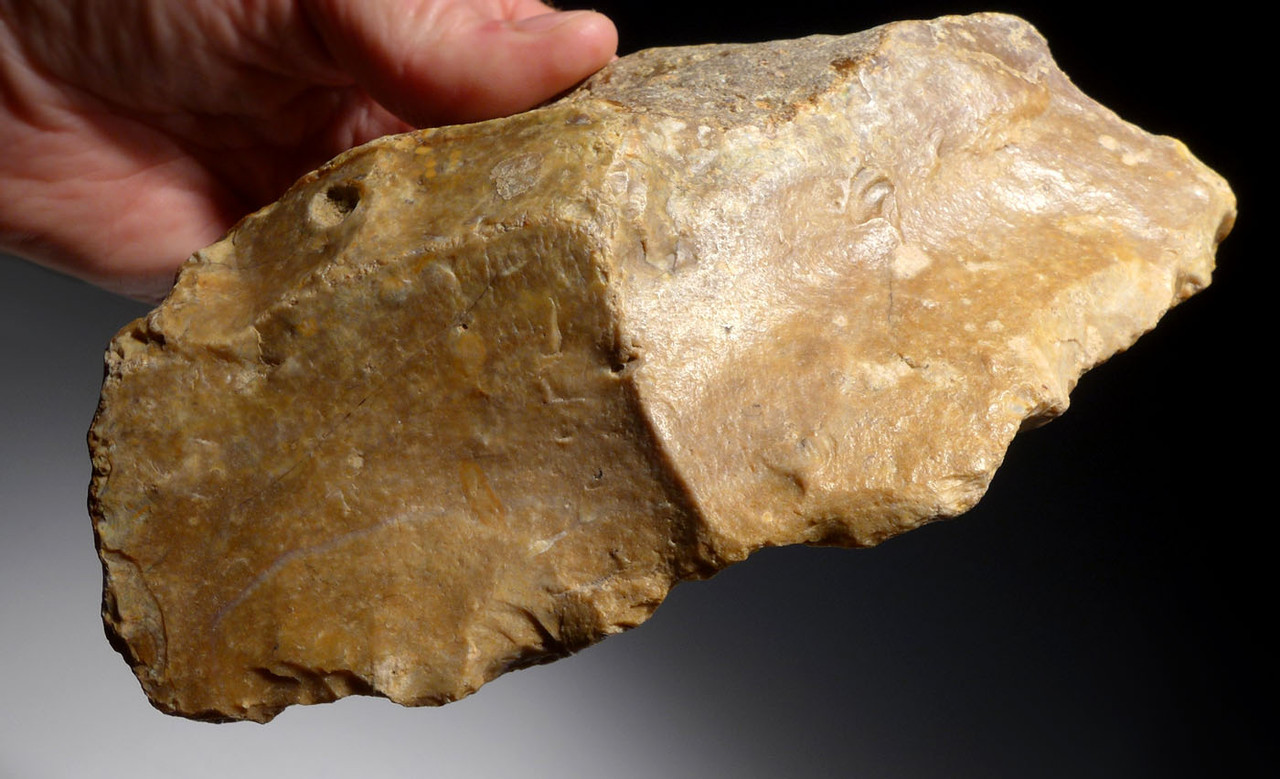Product Description
This rare French Acheulian prehistoric scraper / chopper was fashioned by Homo erectus (H. heidelbergensis), the first humans to occupy Europe. Out of all the rare European Paleolithic artifacts we have handled over the last two decades, this is THE LARGEST scraper we have ever seen from the Acheulian of Europe! It is MASSIVE, not made on a flake but made like a hand axe, from a large flint cobble of Le Grand Pressigny golden flint. A tool such as this would have been necessary to butcher large hunted game such as mammoth, rhino and bison. The heavy weight would have been ideal for primary butchering tasks such as separating limbs, chopping tendons, and de-fleshing hides for use as shelter and clothing. While the photos show a single hand holding it, it really would be suitable for TWO hands in use although, the ingenious design of the natural form of the unflaked area of the cobble was incorporated for a perfect, ergonomically designed single hand grip, needed when the tool would have been covered in slippery fat and blood while used.
This specimen dates back to the Acheulian Period of Europe. The Acheulian Tradition was the predominant tool technology of the Homo erectus people in Europe currently dating back as far as 900,000 years ago. From an old former French private collection formed in the 1950's. Today, digging for artifacts like this is forbidden and has been for decades with most of the best pieces being found in the first half of the last century. Finding an exquisite piece like this ONLY comes from coveted old collections in Europe that usually move from one collection to the next in private collector circles, rarely making it out of the country. FINEST CONDITION AS ORIGINALLY MADE IN PREHISTORY! NO REPAIR and NO RESTORATION. Very highly recommended! No Paleolithic collection should be without representative tools of Europe's first humans!
Fine quality European Acheulian flint tools are far more rare than their African Saharan counterparts and often move swiftly, from one private collection to the next as many sites are now destroyed, built over or protected. In the past decade, European auctions have routinely set records for the highest prices realized on spectacular examples of Prehistoric European artifacts like this. Finest grade specimens are so few in number while the buyer market continues to expand and chase after the best material with no apparent price ceiling in sight. Nevertheless, the prices STILL, are a paltry comparison to much of the more mature rare collectibles on the market and Paleolithic artifact prices still really don't reflect the substantially higher rarity of these artifacts. As ever-increasing buyer demand continues to pursue the best pieces, the actual number of this material is sobering and we are likely to see prices easily rise ten-fold on top-grade specimens, in the next several years. The words "undervalued" and "collectible" are seldom found together in today's world but the realm of European and African Paleolithic artifacts is one where you can still find an emerging market and one of the greatest promises for future appreciation.
WARNING: This specific specimen possesses a fine prehistoric patina and mineral deposits. Such traits are missing in the fake tools being passed off as genuine tools by fraudulent and/or uninformed dealers selling in auctions, online, at shops and shows. The market is currently awash in fakes and ancient debris rock shards sold as genuine Paleolithic tools. Make sure you get an unconditional certificate of authenticity and know your dealer is knowledgeable AND informed.
 US DOLLAR
US DOLLAR
 EURO
EURO
 AUSTRALIAN DOLLAR
AUSTRALIAN DOLLAR
 CANADIAN DOLLAR
CANADIAN DOLLAR
 POUND STERLING
POUND STERLING


























